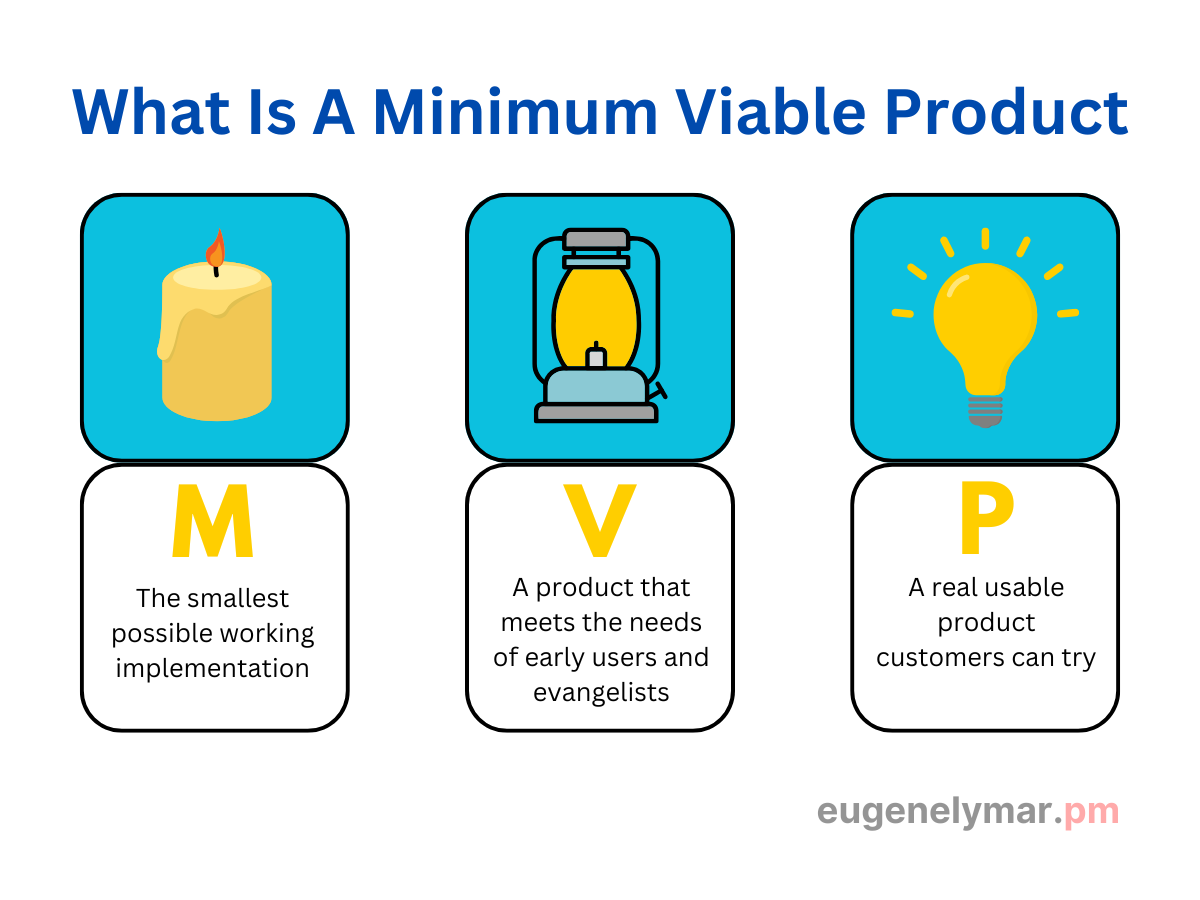What Is an MVP (Minimum Viable Product) and How to Know When Your Product Is Ready for Launch
What Is an MVP (Minimum Viable Product) and How to Know When Your Product Is Ready for Launch
Imagine you’re building a website. You don’t start with a fully designed platform offering the complete variety of services. Instead, you create a simple landing page that can collect email addresses and provide a brief description of your product.
That landing page is your website MVP, or Minimum Viable Product. It is the simplest version of your product that solves a real problem for your audience - it generates early interest and gathers user feedback before you invest significant amount of money into a full-scale platform.
A minimum viable product (MVP) is not about saving money and cutting expenses. It is rather about learning efficiently and verifying early. For example, when Dropbox launched, their MVP wasn’t a fully functional platform. Instead, they created a simple video demonstrating how the product would work. This approach validated their idea before investing significant money in product development.
Why Does an MVP Matter?
Starting with an MVP can save you time, money and efforts. It lets you test your idea in the real world without committing to a full-scale build. Here’s why it’s so powerful:
Reduces risk, so that instead of gambling on a fully developed product, you gather data early.
Speeds up feedback, so you’ll know within weeks (or even days) if your idea resonates with users.
Guides future development and allows early users to shape your roadmap, ensuring you build what people actually want.
For instance, Instagram began as a simple photo-sharing app. They didn’t start with features like Stories or Reels. By focusing on one Photo filters feature they gained traction and grew from there.
How to Prepare Your MVP for Launch
Launching an MVP doesn’t mean rushing to get it out the door. Proper preparation makes all the difference. Start by identifying your audience. Understand exactly who you’re building for because clarity about your target users directly impacts your chances of success.
Then, set clear, measurable goals. Decide what you want to learn from this launch - whether it’s validating demand, assessing usability, or something else entirely.
Finally, test your MVP internally with a small group before the official release. This step helps catch significant issues early and builds confidence in your product.
Take Slack as an example. Before they went public, they tested their product within their own team. This allowed them to refine its functionality while staying aligned with its purpose, ultimately setting the stage for a successful launch.
The Role of Feedback in Refining Your MVP
Your MVP is just the starting point, not the final destination. Feedback plays a crucial role in shaping it into a product that resonates with your audience. To gather meaningful insights, ask open-ended questions. Instead of asking, “Do you like it?” try, “What’s missing?” or “How could this be improved?” Focus on identifying recurring themes in the responses, as these patterns often highlight the most pressing areas for improvement. Then, use the insights to make small, focused changes quickly. Perfection isn’t the goal at this stage—iterative progress is.
Consider Airbnb’s journey. Their initial website was far from polished and barely worked. But by engaging directly with early users, they uncovered which features mattered most. This feedback drove the evolution of their platform into the successful business it is today.
Common Mistakes to Avoid with MVPs
While building and launching an MVP can be exciting, it’s easy to make mistakes along the way. Overloading your MVP with too many features is a common error. Adding unnecessary elements often dilutes the core value of your product and confuses users. Another frequent misstep is skipping research. Building on assumptions without validating your idea can lead to wasted resources and missed opportunities. Finally, ignoring user feedback is a critical mistake. If your users aren’t engaged, resist the urge to blame them. Instead, dive deeper into their experiences, find out why, and make changes to adapt.
By avoiding these pitfalls and taking a thoughtful, feedback-driven approach, your MVP can grow into a product that truly meets user needs.
Final Thoughts
An MVP is your product’s first step into the real world. It’s not about impressing everyone; it’s about learning and growing. Start small, focus on solving one clear problem, and let feedback guide you. Remember, launching an MVP is less about perfection and more about progress.
So, what’s your next move? If you’ve got an idea, take that first step. Build your MVP, share it, and see what happens. The journey from idea to product always starts with a single launch.



